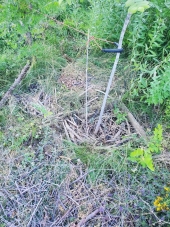
 8
8




Do, there is no try --- Yoda
No one is interested in something you didn't do--- Gord Downie
 2
2





 6
6




List of Bryant RedHawk's Epic Soil Series Threads We love visitors, that's why we live in a secluded cabin deep in the woods. "Buzzard's Roost (Asnikiye Heca) Farm." Promoting permaculture to save our planet.
 1
1




Do, there is no try --- Yoda
No one is interested in something you didn't do--- Gord Downie












 4
4




List of Bryant RedHawk's Epic Soil Series Threads We love visitors, that's why we live in a secluded cabin deep in the woods. "Buzzard's Roost (Asnikiye Heca) Farm." Promoting permaculture to save our planet.
 1
1




Do, there is no try --- Yoda
No one is interested in something you didn't do--- Gord Downie












 2
2




List of Bryant RedHawk's Epic Soil Series Threads We love visitors, that's why we live in a secluded cabin deep in the woods. "Buzzard's Roost (Asnikiye Heca) Farm." Promoting permaculture to save our planet.
 2
2




Do, there is no try --- Yoda
No one is interested in something you didn't do--- Gord Downie
 2
2





|
Why is your dog always so ... moist? Check this tiny ad for some sort of cure:
The new permaculture playing cards kickstarter is now live!
https://www.kickstarter.com/projects/paulwheaton/garden-cards
|





